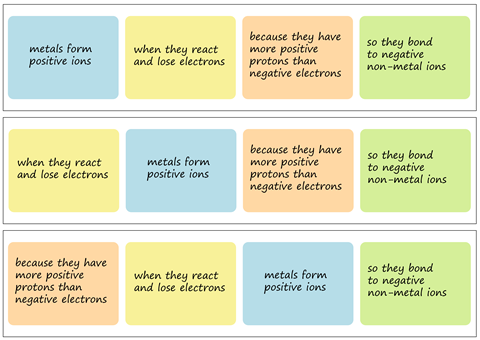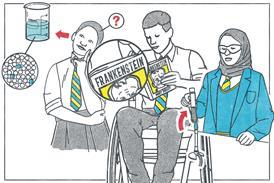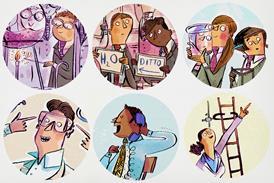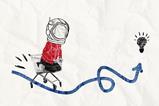Boost your learners’ understanding by constructing complex sentences with these three techniques

Why do I want you to teach your students to write complex sentences? Because sentences are the tools students use to build mental models. A student who writes, ‘Oxygen is a gas and magnesium is a metal,’ is merely listing disconnected facts. But a student who writes, ‘Magnesium, a metal, donates an electron whereas oxygen, a non-metal, accepts one,’ is building cognitive links between concepts.
Model building a rich sentence by asking a series of precise, probing questions
Powerful connecting words, like whereas or because, aren’t just grammar. They are precise connectives linking ideas by chronology, cause and effect, similarities and differences. Here are three easy-to-use techniques to help your students write better sentences.
Download this
Handy table mapping the functions of sentences and useful conjunctions to the cognitive work involved in building more complex sentences. Download as a Word document or pdf.
Handy table mapping the functions of sentences and useful conjunctions to the cognitive work involved in building more complex sentences from the Education in Chemistry website:
Technique 1: build a better sentence
After you have taught the content, help students put this knowledge in a sentence. Model how to do this using a simple kernel sentence, for example: metals form positive ions.
Write this in the centre of the board. Then, model the process of building a rich sentence by asking a series of precise, probing questions, targeted to prompt specific chemical reasoning:
- Question – when does this happen?
- Example answer – when they react and lose electrons.
This prompts students to think about the process.
- Question – why are these ions positive?
- Example answer – because they have more positive protons than negative electrons.
This focuses learners’ thinking on the cause and probes for the underlying mechanism.
- Question – what happens as a result?
- Example answer – they bond to negative non-metal ions.
This prompts thinking about the next logical step or implication.
These answers transform a fragment of a sentence into a rich, connected concept. To make a sentence, learners need to order the answers and original fragments. You can model this on a visualiser with cards to show them how to move the clauses around to create variations on the same sentence; see examples in the figure below. If you prepare the kernel and unambiguous questions, your students can practise this approach to constructing rich complex sentences.

Technique 2: connecting clauses
Give your students two distinct but related ideas and a choice of conjunctions. This simple task is cognitively powerful. It forces students to think about the relationship between the two ideas and to structure their sentences to reflect that logic.
| Example | Sentences | Conjunctions | Resulting sentences |
|---|---|---|---|
|
Cause and effect |
The temperature was increased. The reaction went faster. |
while, so, however |
The temperature was increased so the reaction went faster. |
|
Condition |
You add a catalyst to a reaction. It speeds up. |
if, because, while |
If you add a catalyst to a reaction, it speeds up. |
Technique 3: conjunction gap fills
Provide support structures to help students apply these skills independently. Sentence starters that embed the powerful words help lower the barrier to writing. They provide the grammatical cue, allowing your learners to focus their mental energy on retrieving and explaining the chemical concepts.
Using the concepts from our modelling example, you could provide these starters:
- Metals become positive ions when _______________.
- A metal ion is positive because _______________.
- Metals become positive ions so they _______________.
These scaffolds give students confidence in writing more complex sentences. Consequently, students not only know chemistry, but can also explain it with precision and confidence.
Why teach sentences
Dedicating time to the craft of the sentence is not a detour from the chemistry curriculum. Guiding students to better sentence-building gives them the cognitive tools to build better mental models and to build bridges from isolated facts to interconnected schema. By teaching the language of chemical explanation, we are developing thinkers, communicators and scientists who can articulate not just what they know, but why it matters.
Ben Rogers
Downloads
Sentence planning teacher notes
PDF, Size 0.11 mbSentence planning teacher notes
Editable handout | Word, Size 0.45 mb














No comments yet